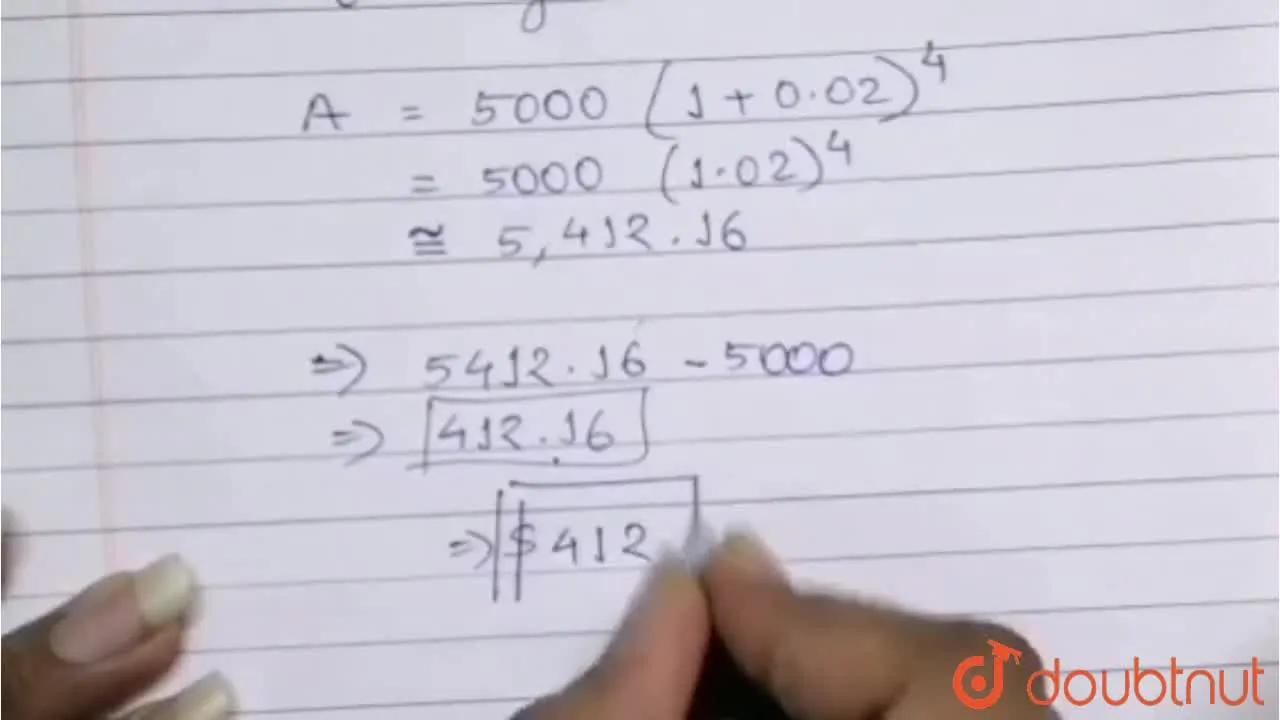Given an account with interest compounded annually, the formula A=P(1+r)t can be used to calculate the total amount of money, A, in the account after t years, where P is the principal ( the amount originally invested) and r is the interest rate (expressed as a decimal). Suppose valeera invests $5,000 in a savings account that pays 2% interest compounded annually earn in four years? Express your answer to the nearest whole dollar.
The correct Answer is:A, B, D
Difficult: Medium
Category: Passport to Advanced Math/ Exponents
Strategic Advice: Even though this question is wordly, if you read carefully you'll see that you're given a formula and the values of all the variables except the one you're looking for. This means you can simply plug in the values and simplify. Before filling in the grib, check that you answered the right question (how much interest was earned, not the total amount in the account).
Getting to the Answer: Jot down the formula A=P(1+r)t, and then plug in the given values: P=5,000,r=0.02,andt=4, to find that A=5,000(1+0.02)4=5,413.16. This is the total amount in the acocunt after 4 years. The initial amount was $5,000, so substract to find that Valeera will earn $5,412.16-$5,000=$412.16 or, rounded to the nearest whole dollar, $412 in interest.
Related Playlists
Similar Questions
The amount of money in the account every year, when Rs 10000 is deposited at compound interest at 8 % per annum.
View SolutionLori deposists $100 in a savings account at 2% interest, compounded annually. After three years, what is the balance on the account? (Assume Lori makes no withdrawals or deposits.)
View SolutionCharles put $1,000 in a saving account that ears 2% compound interest each year. The account would earn approximately $126 in how many years ?
View SolutionFind the amount and the compound interest on Rs 12,000 in 3 years at 5%, interest being compounded annually.
View SolutionFind the amount and the compound interest on Rs 12,000 in 3 years at 5%, interest being compounded annually.
View SolutionMaria invests Rs 93750 at 9.6% per annum for 3 years and the interest is compounded annually. Calculate.
View SolutionGeorge invests $1,000 into an account that he hopes will earh 12% interest annually. How many years (rounded to the nearest year) will it take his investment to double in value?
View SolutionA person invests 5,000 for three years at a certain rate of interest compounded annually. At the end of two years this sum amounts to Rs 6,272. Calculate :
the rate of interest per annum.View SolutionA person invests Rs 5,000 for three years at a certain rate of interest compounded annually. At the end of two years this sum amounts to Rs 6,272. Calculate the rate of interest per annum.
View SolutionAn amount of money invested trebled in 6 years . Find the rate of interest earned .
View Solution


